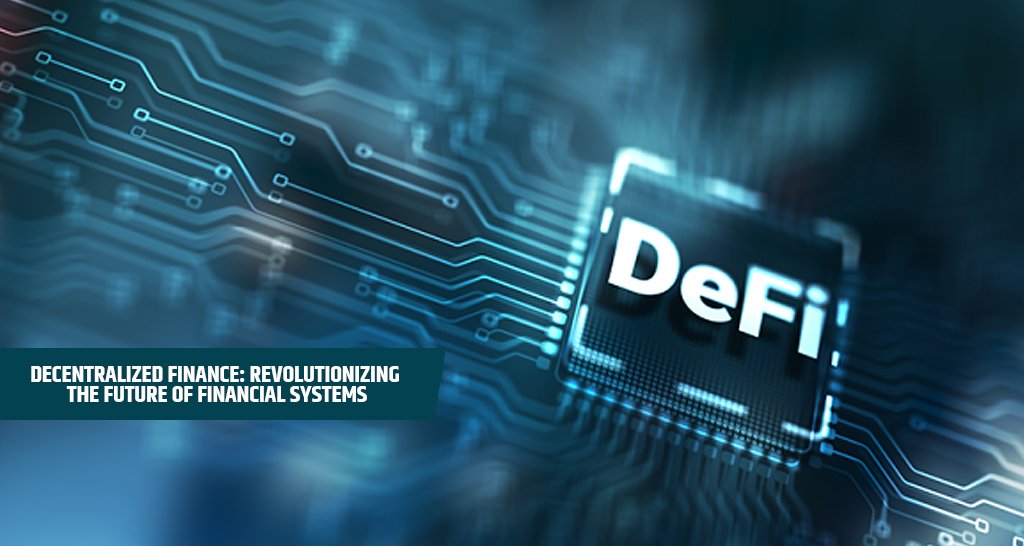Introduction to Decentralized Finance
Decentralized Finance (DeFi) represents a transformative approach to financial systems, focused on creating open, permissionless, and transparent alternatives to conventional financial services. Unlike traditional finance, which is often centralized and controlled by intermediaries such as banks and financial institutions, DeFi utilizes blockchain technology to facilitate peer-to-peer transactions without the need for a central authority. This fundamental shift allows users to have greater control over their financial assets, eliminating barriers associated with traditional finance.
The origins of DeFi can be traced back to the creation of Bitcoin in 2009, which introduced the concept of a decentralized currency. However, it was not until the launch of Ethereum in 2015 that the foundation for a more comprehensive DeFi ecosystem was laid. Ethereum enabled the development of smart contracts, which are self-executing agreements coded directly onto the blockchain. These programmable contracts have paved the way for various DeFi applications, including lending platforms, decentralized exchanges, and yield farming solutions, among others.
Key factors contributing to the emergence of DeFi include the demand for greater financial inclusion, the desire for transparency in financial transactions, and the growing distrust of traditional financial institutions. Through a range of innovative protocols and applications, DeFi aims to meet the diverse needs of users by providing services such as loans, insurance, trading, and asset management, all facilitated through decentralized networks. This paradigm not only empowers individuals to manage their own funds but also challenges the existing financial system, pushing boundaries in accessibility and efficiency.
In the coming sections, we will explore the specific components of the DeFi ecosystem, its potential implications on the global economy, and the challenges it faces as it continues to evolve.
Key Milestones in DeFi Development
The evolution of Decentralized Finance (DeFi) has been marked by several significant milestones that have collectively shaped the current landscape of this innovative sector. One of the foundational blocks of DeFi is Ethereum, which was launched in 2015. Ethereum introduced smart contracts, enabling developers to create decentralized applications (dApps) that could function without intermediaries. This technology laid the groundwork for numerous protocols and platforms, establishing a robust ecosystem for DeFi development.
One major project that emerged from the Ethereum platform is MakerDAO, launched in 2017. MakerDAO introduced the first decentralized stablecoin, DAI, which is collateralized by various assets. This innovation allowed users to borrow, lend, and trade without being subjected to traditional banking systems. MakerDAO represented a pivotal moment, as it provided a use case for stablecoins in enhancing liquidity and enabling efficient transactions across the DeFi space.
Another critical advancement came with the rise of Uniswap in 2018, which is one of the first decentralized exchanges (DEXs). Uniswap operates on an automated market maker (AMM) model, allowing users to trade directly from their wallets without relying on centralized entities. This invention drove the exponential growth of liquidity pools, enabling users to earn fees by providing liquidity to the platform. As DEXs gained popularity, they revolutionized the trading landscape, empowering users with greater control and transparency.
The introduction of strategies like yield farming further accelerated the DeFi movement. Yield farming allows users to earn rewards for providing liquidity to DeFi protocols, thus incentivizing participation and driving the overall growth of the ecosystem. As more protocols embraced this concept, the DeFi space expanded exponentially, showcasing the potential for innovation and decentralization within finance.
These milestones, alongside various technological advancements, have propelled DeFi from niche projects to a significant sector within the broader financial landscape, paving the way for ongoing developments and the future of decentralized finance.
Impact of DeFi on Traditional Finance
The emergence of Decentralized Finance (DeFi) has begun to significantly reshape the landscape of traditional finance. By harnessing blockchain technology, DeFi introduces a new paradigm that challenges existing financial models and institutions. Traditional finance relies heavily on centralized intermediaries such as banks and asset managers, whereas DeFi removes these middlemen, allowing participants to interact directly through smart contracts. This shift not only reduces costs but also increases the speed of transactions, presenting a substantial disruption to established banking practices.
Furthermore, the democratization of finance is one of the most profound implications of DeFi. By making financial services accessible to a broader audience, including those disenfranchised by traditional systems, DeFi empowers individuals with greater financial autonomy. This newly open access to lending, borrowing, and trading can mitigate the historical inequalities entrenched in financial services, thus fostering an environment where financial inclusion becomes a reality rather than a distant goal.
Despite the opportunities that DeFi presents, it also poses significant risks to traditional financial institutions. The rise of decentralized applications (dApps) creates competitive pressure on banks and financial entities to innovate and adapt quickly. As these services gain traction, traditional players may find themselves at risk of obsolescence if they fail to modernize. Furthermore, the regulatory landscape for DeFi remains largely uncharted territory, raising critical questions regarding compliance and risk management. Financial regulators will need to reconcile the innovative potential of DeFi with the need for consumer protection and market stability, which may necessitate the development of new regulatory frameworks.
In conclusion, the impact of DeFi on traditional finance is multi-faceted, presenting both opportunities and challenges. The interplay between innovation and regulation will be crucial for defining the future relationship between decentralized finance and traditional financial institutions.
The Future of DeFi: Trends and Challenges
The decentralized finance (DeFi) ecosystem is poised for significant transformation in the coming years. One of the key trends shaping the future of DeFi is the increasing adoption of decentralized applications (dApps) and platforms by a broader audience. As users become more aware of the advantages of DeFi, such as increased transparency, financial inclusivity, and reduced reliance on traditional banking systems, the demand for innovative DeFi solutions is likely to rise. Moreover, the integration of user-friendly interfaces and educational resources will play a crucial role in attracting new users to this ecosystem.
Interoperability among different DeFi platforms and blockchains presents another critical trend. As the DeFi landscape expands, the ability for various protocols to communicate and interact seamlessly will enhance user experience and expand opportunities for liquidity and asset management across platforms. Initiatives aimed at building cross-chain bridges and standardized protocols will be essential in fostering a more cohesive DeFi environment. Furthermore, the development of decentralized identity solutions may improve user verification processes, thereby unlocking new functionalities within various DeFi applications.
However, alongside these promising trends, DeFi must address significant challenges. Security remains a pervasive concern, as various protocols have already experienced exploits and hacks. Strengthening the security of smart contracts and promoting audit practices are vital to enhancing user confidence in DeFi solutions. Additionally, regulatory developments are anticipated to shape the future of decentralized finance. While regulation can provide a framework for legitimacy, it can also impose restrictions that may stunt innovation and the decentralized ethos of the ecosystem. Balancing regulation with the principles of DeFi will be crucial for its sustained growth.
Overall, the future of decentralized finance holds immense potential to transform the global financial landscape. By addressing the challenges ahead, the DeFi sector can pave the way for more inclusive, secure, and innovative financial solutions.



